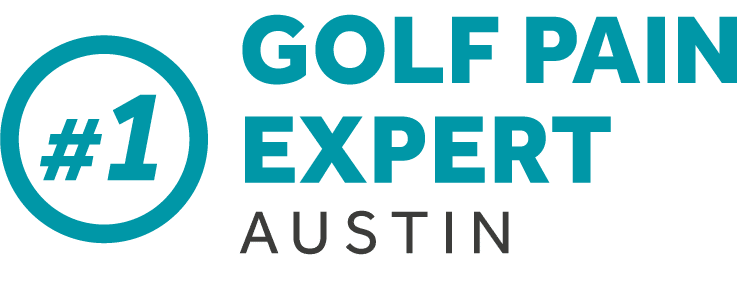Golf is a game of precision, power, and patience. But for many active adults, recurring discomfort in the back, shoulders, hips, or knees can throw off their swing and limit both enjoyment and performance on the course. What most golfers don’t realize is that the solution to a more fluid, powerful, and pain-free swing often lies not in expensive equipment or endless driving range sessions—but in targeted physical therapy.
In this guide, we’ll break down exactly how you can improve your golf swing with physical therapy and give your body the mechanics, mobility, and strength it needs to perform consistently and without discomfort.
Why Physical Therapy Matters for Golfers
Your golf swing is a complex, full-body movement that relies on coordinated effort between your spine, shoulders, hips, and core. If any one part of that chain is weak, stiff, or out of alignment, it can affect everything—from your accuracy and distance to your risk of injury.
Whether you’re struggling with a nagging low back issue, tight shoulders, or reduced hip rotation, working with a physical therapist can:
- Identify movement restrictions
- Improve your joint mobility and muscular control
- Reduce compensations that create discomfort
- Restore power and precision to your swing
Put simply, you can improve your golf swing with physical therapy because it treats the root causes of movement limitations—not just the symptoms.
Tip 1: Strengthen Your Core for Swing Stability
Your core is the foundation of your swing. It helps you transfer force from your lower body to your upper body during the rotation. A weak or uncoordinated core leads to poor swing mechanics and often contributes to low back discomfort.
Try these physical therapy-based exercises:
- Dead bugs (to build core coordination)
- Bird-dogs (to promote spinal stability)
- Planks and side planks (to activate the deep core muscles)
When your core is strong and stable, you’ll notice better balance and a more controlled follow-through.
Tip 2: Improve Thoracic Spine Mobility
One of the biggest swing killers is a stiff mid-back. The thoracic spine (middle part of your spine) is supposed to rotate during your backswing and follow-through. If it doesn’t move well, the low back and shoulders are forced to compensate—leading to poor form and higher injury risk.
Try these mobility drills:
- Open book stretch
- Seated thoracic rotation
- Foam roller extensions over the upper back
A more mobile mid-back allows for a fuller backswing, more torque, and a smoother release.
Tip 3: Optimize Hip Rotation
Your hips generate power in your swing. Tightness or weakness in your hips can lead to a loss of distance, early extension, or swing inconsistencies.
A physical therapist can assess hip internal and external rotation, as well as glute strength. Common corrective exercises include:
- 90/90 hip switches
- Hip bridges with marching
- Standing resisted hip rotations
When your hips rotate well and fire at the right time, your swing becomes more efficient and powerful.
Tip 4: Address Shoulder Stability
Your shoulders absorb a lot of force during the swing. If your rotator cuff or scapular stabilizers are weak, you’re more prone to irritation and inconsistent ball striking.
To improve shoulder control, incorporate:
- Wall slides with resistance band
- Scapular retraction drills
- Rotator cuff banded rotations
These exercises not only improve swing control, but they also help prevent common overuse injuries like impingement or tendinitis.
Tip 5: Restore Balance and Proprioception
Balance and coordination are often overlooked in golf-specific training. Yet, maintaining stable posture throughout the swing is essential for consistent ball contact.
Use these PT-tested drills:
- Single-leg stance with rotation
- Balance pad drills
- Step-up and reach
Improving your balance will make you more stable in your swing and reduce energy leaks.
Tip 6: Retrain Swing Mechanics After Injury
If you’ve dealt with a prior injury—like back surgery, knee pain, or a rotator cuff tear—you may have adapted your swing to protect the injured area. Unfortunately, these adaptations often lead to poor form and recurring discomfort.
A golf-trained physical therapist can help you:
- Identify compensatory movement patterns
- Rebuild correct form and strength safely
- Gradually return to play with confidence
This is a crucial step if you want to return to golf pain-free and stronger than before.
Why You Should Work with a Golf-Specific PT
Not all physical therapists understand the biomechanics of golf. That’s why it’s important to work with someone who specializes in the sport.
At Body Balance Physical Therapy, I take golfers through a full-body movement screen, identify restrictions, and build a customized plan to improve your golf swing with physical therapy in a way that matches your goals, skill level, and medical history.
Whether you want to hit longer drives, reduce post-round soreness, or just enjoy the game without limitations—we’re here to help you move better and play stronger.
Ready to Improve Your Swing and Feel Better on the Course?
You don’t have to live with discomfort every time you swing a club. The right physical therapy plan can help you regain control, build strength, and move more freely—so you can play your best round yet.
We’re currently offering Free Discovery Visits at Body Balance for golfers looking to restore their swing and reduce discomfort naturally.
This session is your chance to meet one-on-one with a golf-specific physical therapist, get a quick screen, and discover how we can help you:
✔ Improve flexibility and swing mechanics
✔ Reduce nagging discomfort in the back, shoulders, or knees
✔ Build a personalized plan for lasting results
Call us today at (512) 261-8699 or click here to reserve your Free Discovery Visit.
It’s time to feel confident on the course again—with every swing.
